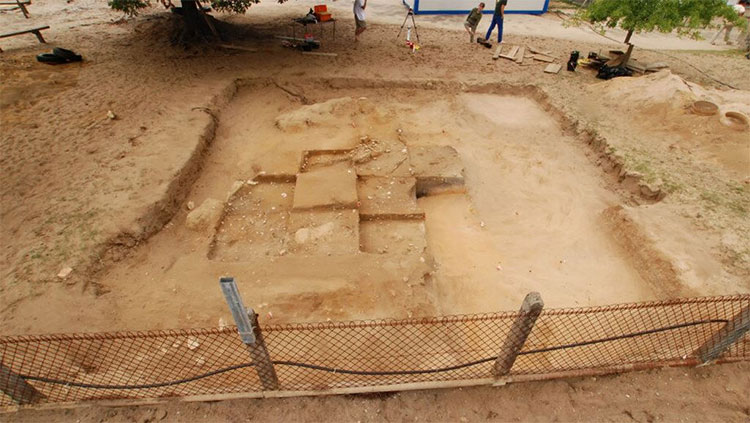discovered burial mounds 5,600 years old
This is a favorite playground for children in southern France. They can learn new things, play together, sing together, and . unearth this 5,600-year-old tomb.
That's exactly what happened in 2006, when a group of students in the town of Saint-Laurent-Médoc , Gironde in the Aquitaine region of southwestern France, accidentally dug some old bones in the playground. nursery school.
That means that part of the school is built on an ancient burial mound . Initial analysis shows that this place holds the remains of humans who are thousands of years old.
Now a new study called Le Tumulus des Sables suggests that this mound seems to be older and buried more remains than we think.

There are about 30 remains located in a mound just about 50cm deep.
In the April 2019 issue of Archaeological Science, a group of archaeologists excavated the mound and found about 30 remains (20 adults and 10 children) interspersed in a mound only about 50cm deep. Even more surprisingly, by the method of radioactive carbon a few teeth were found in the pit, these remains were buried from the Neolithic period (about 3600 BC) and ended in the map period. iron (1250 BC). Thus, the date of this monument is about 5,600 years from us.
Researchers have questioned why the place where the remains of human remains for thousands of years were never excavated even though they were located in crowded places.
'It is difficult to understand because this is not a popular place,' said Hannah James, lead researcher and doctoral student at the Australian National University in Canberra. 'It's not on a hill or a clear place, so there's something strange about this burial mound.'
Currently, archaeologists have only concluded that these remains are local people. An analysis of the isotopes in the remains shows that all of the food groups in the nutritional towers of these people originated inland, but not seafood from nearby rivers or the Atlantic. They may live in very cold climates but are taken to burial in this location.
In addition, there are many other items such as pottery, metal and animal bones. In other words, there are lots of interesting materials for kindergarten students who can study and study more about the ancestors' lives.
- Many tombs have been discovered dating back over 6000 years
- Boxes buried 2,000 years old
- New Zealand saves the herd of cows that are stuck on small mounds after the earthquake
- The goal is that few people know of burial on trees
- Strangely, burial of dead people lasted for years
- 'Eco-friendly' burial is becoming a trend!
- Mexico discovered an ancient burial site dating back to 800 years
- Ancient antiquities of 'Romeo and Juliet' were discovered next to each other
- Detecting a thousand-year grave population of Sa Huynh residents
- The super-wide clusters of English can be seen from the universe
- Unusual burial practices in Tibet
- This may be a new method of burial in the future
 Discovered an ancient centipede fossil 99 million years old
Discovered an ancient centipede fossil 99 million years old Discovered bat-like dinosaurs in China
Discovered bat-like dinosaurs in China Discovered a 200-year-old bronze cannon of the coast
Discovered a 200-year-old bronze cannon of the coast Discover 305 million-year-old spider fossils
Discover 305 million-year-old spider fossils